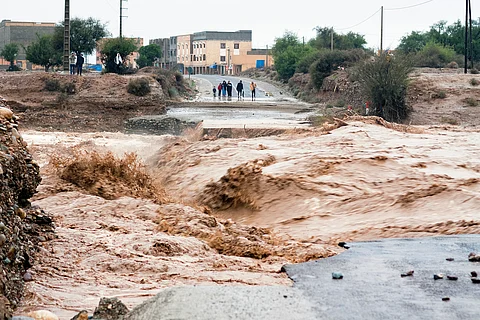

Alterations in African easterly waves (AEWs) due to an adversely changing climate could impact the transport of Saharan dust and mesoscale convective activity over the Sahel according to a new study published in Communications Earth & Environment, January 2, 2025.
Mesoscale convective systems (MCS) are responsible for the majority of extreme rainfall and many other weather hazards such as hail and tornadoes.
African Easterly Waves, or AEWs are weather systems that form above northern Africa during the summer season, and travel east to west, toward the Atlantic Ocean.
These weather systems bring rainstorms to many drought-prone areas of northern Africa, carry Saharan dust across the ocean, and seed Atlantic hurricanes.
AEWs significantly influence regional hydroclimate and thus it is important to understand how global warming will impact their activity.
In the study, researchers investigated future changes in wave activity and assessed the underlying mechanisms using an ensemble of Earth system models.
The study found a robust increase in wave activity over the Sahel–Sahara region by the end of the 21st century under two emission scenarios. “The intensification is linked to increased baroclinicity associated with a strengthening of the meridional temperature gradient between the Guinea Coast and the Sahara,” the study found.
The results also indicated that low-level warming enhances the waves by reinforcing monsoon flow, leading to increased convergence and vertical motion along the intertropical discontinuity. These energetic alterations significantly alter the conditions that currently produce these waves.
Given the link between AEWs and MCSs that cause extreme flooding in the Sahel, the results suggested an increase in the intensity and/or frequency of such events in a warmer climate.
The projected increase in AEW activity holds significant implications for future Saharan dust transport, given that the region with the highest projected increase in AEW activity lies over prolific dust sources within the western Sahara.
“Strong winds associated with a northern track AEW can transport dry Saharan air downstream, either inhibiting tropical cyclone formation entirely or delaying tropical cyclogenesis until the wave reaches more favorable environmental conditions farther west in the Atlantic basin, where sea surface temperatures are warmer,” the study led by Akintomide A. Akinsanola, University of Illinois said.
African easterly waves (AEWs) exert significant influence on weather and climate - by acting as precursor disturbances or preexisting cyclonic circulations for Atlantic tropical cyclone development, mobilizing and transporting Saharan dust within Africa and globally, and modulating rainfall across the Sahel during the West African monsoon.
A 2014 study by Stanford scientists also entailed about how climate change has the potential to intensify African weather systems or AEWs which in turn have consequences for rainfall in the Sahel region of northern Africa, the formation of Atlantic hurricanes, and dust transport across the Atlantic Ocean.
A 2023 study published in JGR Atmospheres said that future changes in the frequency of African easterly waves are not a good indicator of future tropical cyclone activity. AEWs that develop into tropical cyclones are stronger than non-developing waves in historical and future climates.